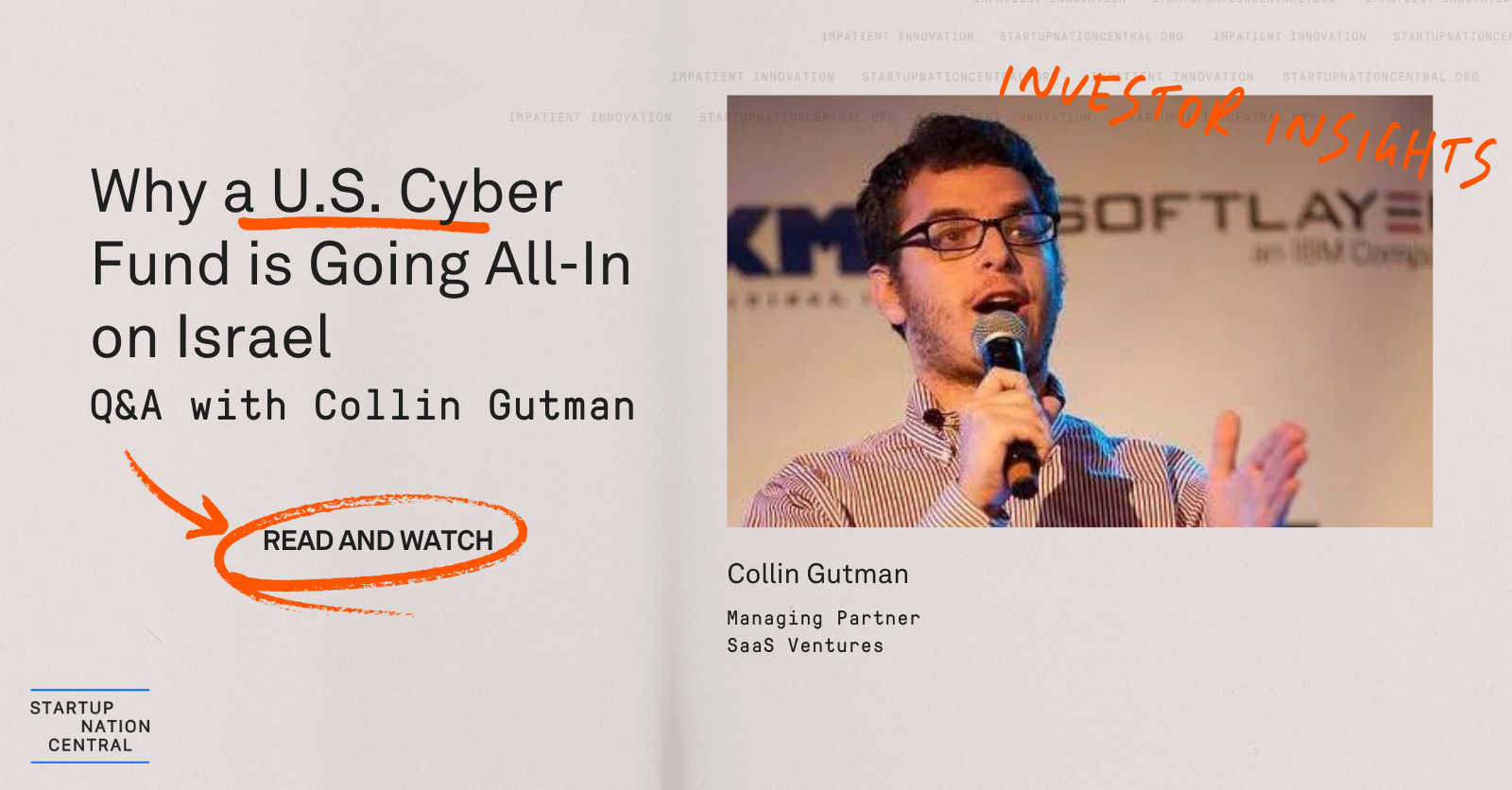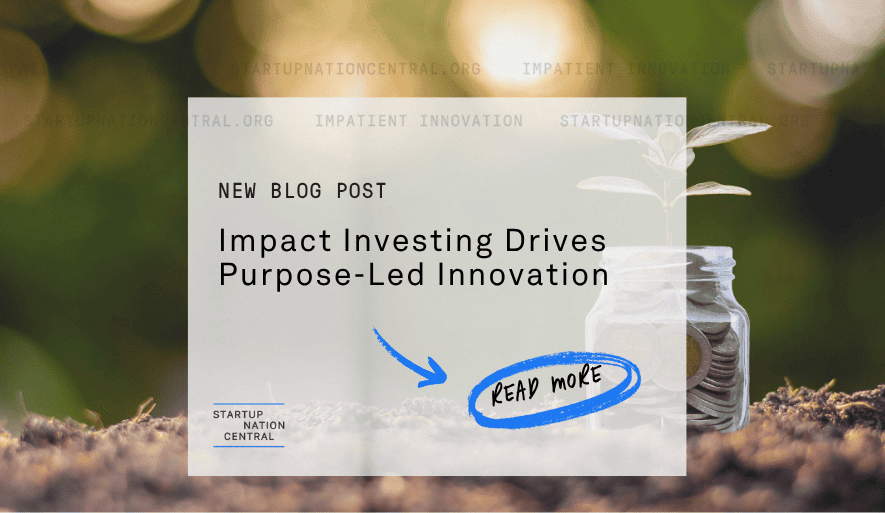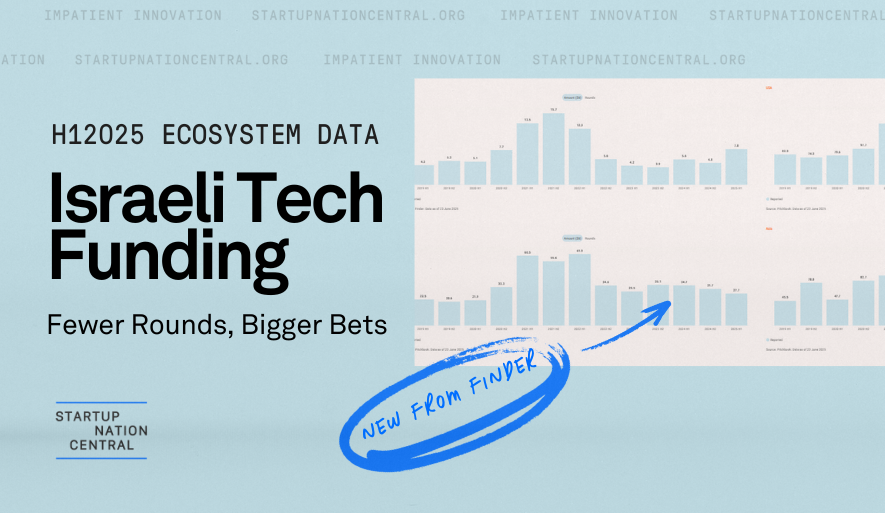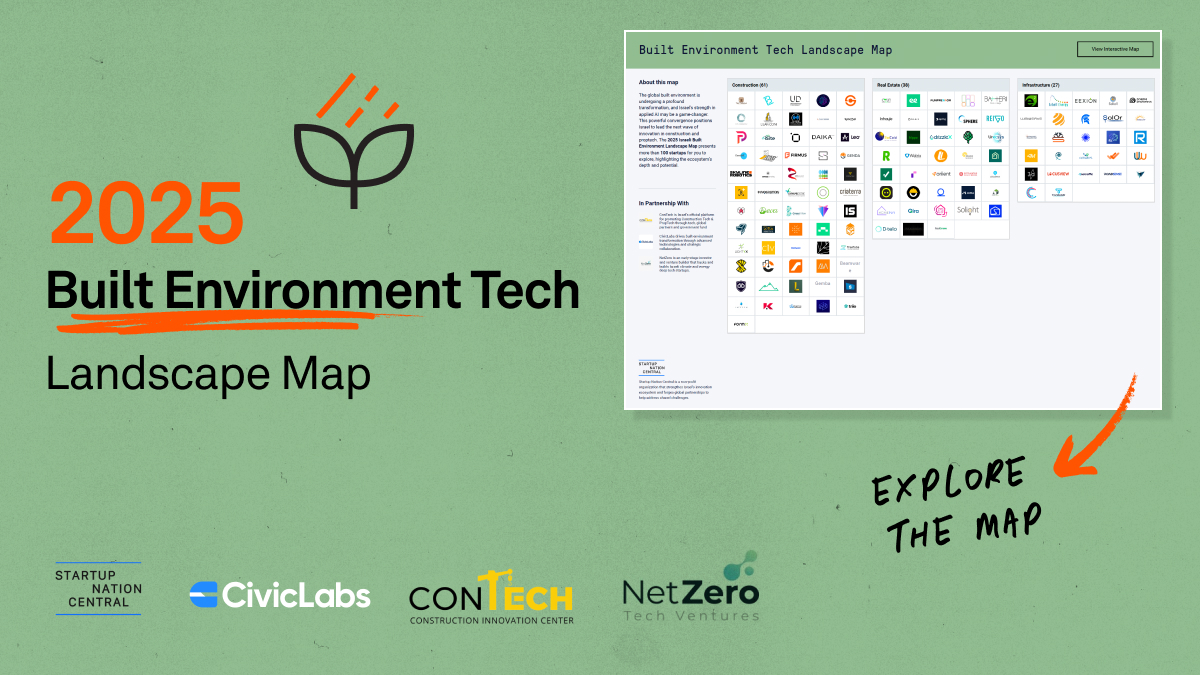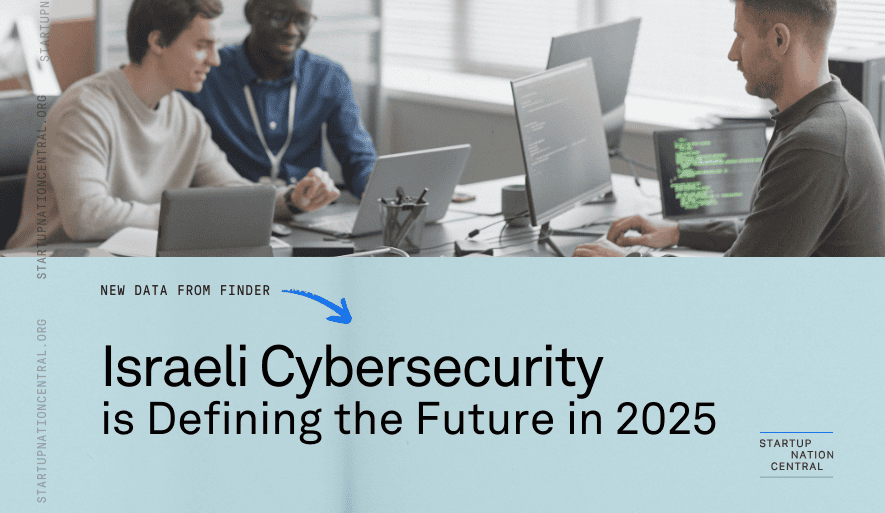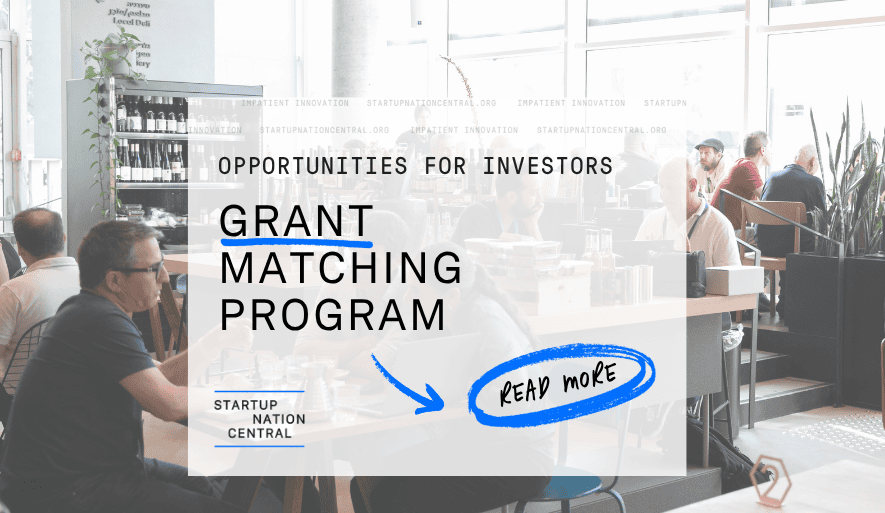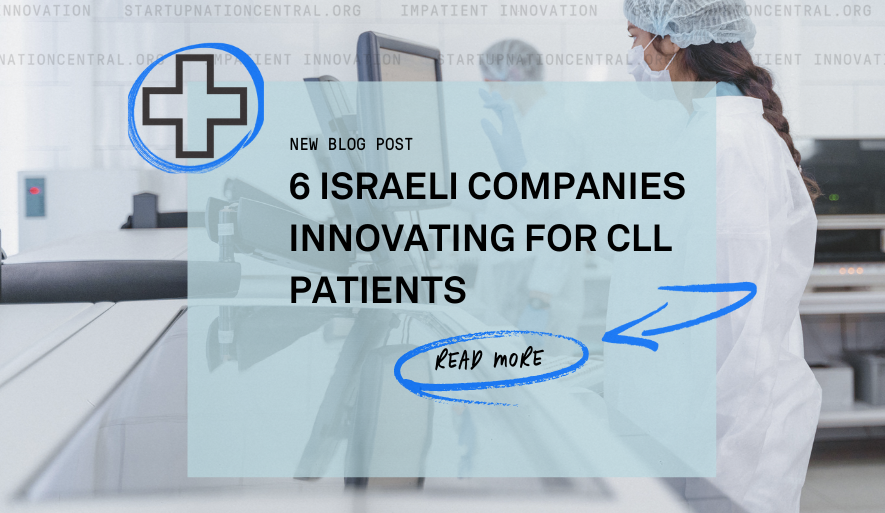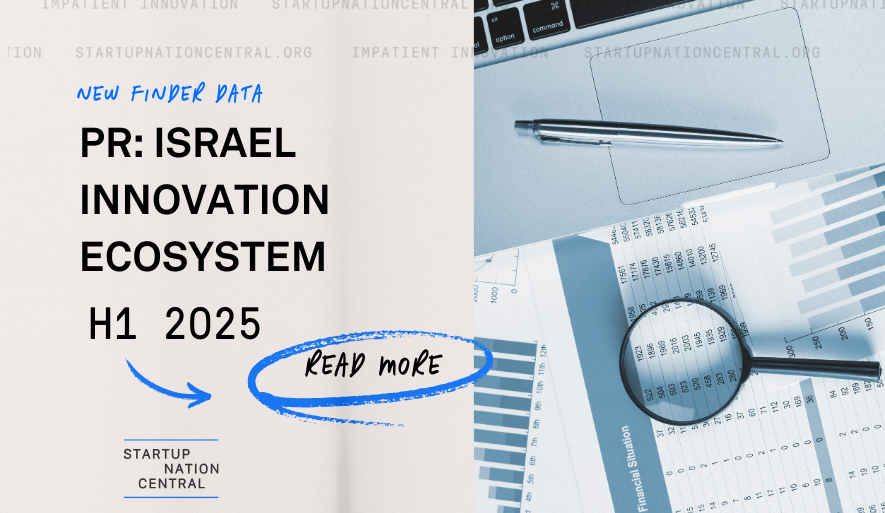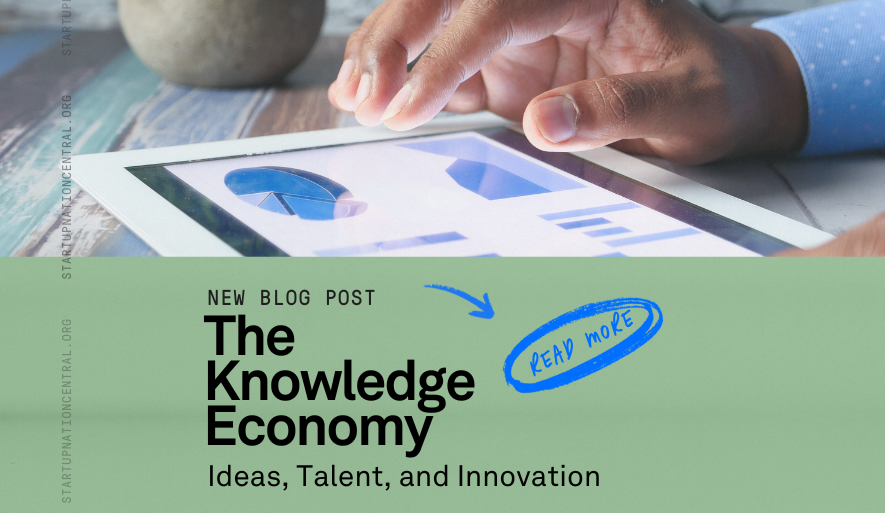- Why Israel
- Ecosystem GrowthWe enhance the tech ecosystem and possess the expertise to utilize Israeli startups effectively in addressing current demands
- Global PartnershipsWe fortify the tech ecosystem by building bridges between local entrepreneurs and global partners
- AboutDiscover a wealth of resources tailored to support your journey in the vibrant Israeli startup ecosystem
- Content HubIsrael’s Impatient Innovation is shaping the future. Read and explore.
Startup Terms Glossary
Welcome to Startup Nation Central's Startup Terms Glossary, your go-to resource for understanding key concepts in the startup world. Whether you're a founder, investor, or just getting started, this glossary covers essential startup terms to help you navigate the language of innovation, funding, and growth with confidence.
A
Accelerator
A fixed-term program that supports early-stage startups with mentorship, resources, and exposure to investors. Most accelerators end with a demo day where companies present their progress
Acquisition
When one company buys another by purchasing most or all of its shares. The goal is usually to gain control and integrate operations or assets.
Adjacent Innovation
Expanding a company’s core capabilities into a new but related market. This builds on existing strengths and creates new valuable opportunities.
Advertising Platforms
Software tools that help manage digital advertising campaigns. They improve efficiency through automation, targeting, and performance tracking.
Aerospace, Defense and HLS Tech
Technologies that support aerospace development, defense systems, and homeland security. These include drones, satellites, sensors, and communication tools.
Aesthetic Devices
Medical or cosmetic instruments are designed to change or enhance human appearance. They are commonly used in dermatology and aesthetic medicine.
AgriTech
Sometimes called AgTech or Ag Tech, all of these startup terms refer to technology applied to agriculture to improve productivity and sustainability. This includes biotech, automation, and precision farming tools.
Agile Software Development
A development method that focuses on flexibility and iteration. Agile teams test, reassess, and adjust frequently to respond to change.
AI Alignment
The process of ensuring that artificial intelligence systems behave in ways that align with human intentions and ethical standards. It is especially relevant in advanced AI and autonomous systems.
AI-First Company
A company where artificial intelligence is not just a feature, but the core of the product, business model, or operational logic.
Alternative Proteins
Sources of protein that are not derived from animals, such as plant-based, cultured meat, or fermentation-based products. These are central to food tech and sustainability.
Attractive Valuation
A company valuation that is considered favorable to investors based on risk, market conditions, or growth potential. Often refers to down rounds or market resets.
B
B2B (Business-to-Business)
A business model where products or services are sold to other businesses. By definition these solutions do not target end users (consumers).
B2B2C (Business-to-Business-to-Consumer)
A business model where a business sells through another business to reach end user (consumers). It blends B2B and B2C strategies.
B2C (Business-to-Consumer)
A direct type of business model where a business sells its products or services straight to individual end users (consumers).
B2G (Business-to-Government)
A business model where businesses sell solutions to government agencies. These solutions often serve public needs or infrastructure.
Barriers and Boosters
Internal or external factors that slow down or speed up innovation adoption. Identifying them helps optimize solution rollout.
Beta
An advanced product version released for testing with external users. Feedback from this phase informs the final version.
Bio-Convergence
An interdisciplinary field combining biology with engineering, AI, and physics. It is a key strategic focus in Israel for creating next-generation healthcare and defense solutions.
Biomaterials and Tissue Engineering
Synthetic or natural materials used in healthcare products. This field also includes growing tissue for medical use.
Bootstrapping
Building and growing a company using personal funds or early revenue. Startups that bootstrap often delay or avoid outside investment.
Brainstorming
A method for generating many creative ideas in a group setting. It encourages open thinking and problem-solving.
Breakthrough Innovation
A type of innovation that delivers major performance improvements or opens new markets. It often relies on new technology or models.
Bridge Round
A short-term funding round raised between major investment rounds. It helps startups extend runway or meet key milestones.
Burn Rate
The pace at which a startup spends its available funds. This metric helps estimate how long the company can operate before needing more capital.
Business Collaboration
Working jointly across teams or organizations to reach a shared goal. Collaboration enhances innovation and problem-solving. Of particular importance is corporate-startup collaboration, where a startup and bigger corporation join together with a common goal.
Business Case
An evaluation that outlines the value, costs, risks, and feasibility of a solution. It is used to support go or no-go decisions.
Business Model Canvas
A visual tool to define a company’s strategy and operations. It covers areas like customer segments, revenue, and value proposition.
Business Models
Defines how a company earns revenue from its customers. Common models include B2B, B2C, and B2G.
Business Software
Tools that support business operations, often found in finance, HR, IT, and sales departments. These solutions help manage core business functions.
Buyout
When investors purchase a controlling share of a company. This often provides an exit for previous investors or owners.
C
Carbon Tech
Technologies that remove, track, or reduce carbon emissions. These solutions aim to combat climate change and support sustainability.
Cap Table (Capitalization Table)
A document that outlines a company’s ownership structure. It includes shares held by founders, employees, and investors.
Carbon Accounting
The measurement of greenhouse gas emissions generated directly or indirectly by an organization. Used in sustainability tracking and ESG reporting.
Carbon Tech
Technologies that capture, reduce, or track carbon emissions. These solutions help address climate change and comply with regulations.
Catastrophic Risk Tech
Technologies that detect, mitigate, or recover from major disasters such as cyberattacks, infrastructure collapse, or climate shocks.
Circular Economy
A model focused on designing out waste and reusing resources. It supports long-term environmental and economic sustainability, replacing linear, disposable systems.
Climate Risk Tech
Tools and platforms that assess and predict climate-related risks. Often used by insurers, urban planners, and governments.
Cloud Security
Technologies that protect data and systems in the virtual “cloud.” These solutions ensure compliance, control, and access security.
Co-Creation
In the context of business, co-creation is a collaborative product development between companies and external stakeholders. This may include customers, partners, or suppliers.
Collaborative Strategy Process
Involving employees in defining or refining organizational strategy. This approach builds ownership and alignment.
Commercialization of Innovation
The process of turning new ideas into market-ready products. It includes product development, marketing, and sales.
Communication and Navigation Tech
Technologies for transmitting data and determining location. These are used in satellites, aviation, and defense.
Competitive Edge
Attributes that give a company an advantage over rivals. These may include tech, brand, cost, or IP.
Convertible Debt
A loan that can be converted into equity under specific conditions. It is often used in early-stage startup financing.
Coopetition
A mix of cooperation and competition between companies. It can help firms learn from one another or grow the market together.
Core Innovation
Small, ongoing improvements to a company’s main products or services. This type of innovation sustains core business operations.
Corporate Accelerator
An accelerator run by a corporation. It supports startups aligned with corporate innovation goals.
Critical Assumption
A risky assumption that must be validated for a solution to succeed. It often represents a key uncertainty in early stages.
Cross-Border Innovation
Collaborative R&D or business development between companies in different countries. Israel often plays a key role in these partnerships.
Crossing the Chasm
A concept describing the gap between early adopters and mainstream users. Bridging it is key for product scaling.
Crowdfunding
Raising small amounts of money from many individuals, often online. This approach is common for early-stage ventures.
Crowdsourcing
Collecting input, ideas, or services from a large group, typically online. It supports innovation, design, and decision-making.
Customer Development
An early product stage where teams validate market needs. This involves research, interviews, and testing assumptions.
D
Data Architecture
The structure that defines how data is collected, stored, and accessed within an organization. It supports effective data use and governance.
Data Security
Practices and technologies used to protect data from unauthorized access or loss. Includes encryption, access control, and backup.
Debt Financing
Raising capital through loans that must be repaid with interest. Unlike equity financing, it does not dilute ownership.
Decentralized Finance (DeFi)
Blockchain-based financial services that do not rely on traditional banks. Users interact through smart contracts and decentralized protocols.
Decentralized Identity (DID)
A way to manage digital identity using blockchain. It gives users control over their credentials without central authorities.
Deep Tech
Technology rooted in scientific research or engineering innovation. It often requires long development cycles and solves complex problems.
Defense Dual-Use
Technology with both civilian and military applications. Many Israeli startups operate in this space, especially those led by ex-military officers.
Delisting
The removal of a company's shares from a public stock exchange. This may happen voluntarily or due to failure to meet listing standards.
Demographic Dividend
Economic growth potential resulting from a young, skilled workforce. Israel benefits from a tech-savvy population with military training.
Design Sprint
A structured process for solving big problems and testing ideas in a short time. It compresses months of work into a few days.
Design Thinking
A user-focused method for solving problems through empathy, prototyping, and testing. Commonly used in innovation projects.
Diagnostics Devices
Tools used to detect or monitor health conditions. These include imaging systems, lab testing equipment, and sensors.
Digital Health
The use of software and hardware to enhance healthcare delivery. Includes telemedicine, apps, and health data platforms.
Digital Therapeutics
Software-based treatments for medical conditions. These tools help patients manage diseases with clinically validated outcomes.
Disruptive Innovation
A new approach that significantly changes an existing market. It often begins in underserved segments before moving mainstream.
Dry Powder
Capital that investors have raised but not yet deployed. It indicates readiness to invest when the right opportunity appears.
Due Diligence
The research and analysis performed before an investment or acquisition. It reviews financial, legal, and business risks.
E
e-Commerce Tools
Digital platforms that support buying and selling online. Includes payment gateways, storefronts, and inventory systems.
Early Adopter
A user who embraces new products or technologies before the general public. Their feedback is critical for early growth.
Ecosystem
A network of startups, investors, corporates, and institutions working together. Israel’s ecosystem thrives on collaboration and speed.
Electric Mobility and Alternative Fuels
Vehicles and infrastructure that reduce dependence on fossil fuels. Includes EVs, charging networks, and hydrogen tech.
Embedded Finance
Financial services such as payments or lending integrated into non-financial apps. It simplifies access to financial tools for users.
Energy Management and Grid Integration
Systems for balancing electricity supply and demand. These include smart grids and energy storage solutions.
Energy Production and Sources
The generation of power from various sources. Includes renewables like solar and wind, and traditional sources like gas and coal.
Entrepreneur
A person who starts and builds a business, often around a new technology or innovation. Entrepreneurs take risks and drive change.
Equity
Ownership in a company, usually represented by shares. Investors receive equity in exchange for capital.
Exit
An event where investors sell their stake, such as through an IPO or acquisition. It represents a return on investment.
F
Family Office Direct Investment
When family offices invest directly into startups rather than through venture funds. This approach gives them greater control and alignment.
Feasibility
An evaluation of whether a proposed idea or solution can realistically be built and used. It considers technical and operational limits.
Fintech
Technology used to improve financial services. Includes digital payments, lending platforms, and financial analytics.
First-Mover Advantage
The competitive edge gained by being the first to market a new product or service.
Founder
A person who starts a company and drives its early development. Founders often lead product, team, and funding efforts.
Fractional Executive
A senior leader who works part-time or on contract for startups. It allows companies to access experienced talent without a full-time hire.
Friends, Family and Fools (FFF)
The earliest supporters who provide capital to startups. This funding is usually informal and based on personal trust.
Future of Work
Technologies and practices shaping how people work, including remote tools, digital collaboration, and workplace automation.
G
GenAI (Generative AI)
Artificial intelligence that creates original content such as text, images, or music. Generative AI learns from existing data to produce original outputs.
Green Tech
Technologies that reduce environmental harm and support sustainability. Often used in energy, agriculture, and manufacturing.
Greenwashing
Marketing claims that overstate or misrepresent a company’s environmental practices. It can damage trust and lead to regulatory scrutiny.
H
Hard Tech
Innovation focused on physical products based in science or engineering, often involving hardware. Includes robotics, sensors, and manufacturing tech.
Health Equity Tech
Solutions that improve access and outcomes across different population groups. It targets disparities in healthcare delivery and resources.
Holding Company
A business entity that owns controlling interests in other companies. It does not produce goods or services itself.
Hostile Tech Takeover
When a foreign or strategic actor attempts to acquire sensitive tech assets. This is a national security concern in countries like Israel.
I
Impact Measurement
Tracking the social, environmental, or economic impact of a product or company. Impact measurement is especially important for mission-driven ventures.
Incubator
An organization that supports early-stage startups. Offers resources, mentorship, and workspace during product development.
Innovation
The creation and implementation of new ideas that deliver value. Innovation can be technological, business model, or process-related.
Innovation Diplomacy
The use of technological collaboration to strengthen international relationships. This type of diplomacy helps align countries around shared innovation goals, such as Israel's collaboration with its neighbors through tech initiatives.
Innovation Lab
A team or unit that explores new ideas and prototypes. Labs often operate separately from the core business.
Innovation Strategy
A plan that defines how an organization uses innovation to achieve goals. It aligns resources, timelines, and success metrics.
Investor
An individual or entity that provides capital to a startup in exchange for equity or future returns.
IPO (Initial Public Offering)
When a private company lists its shares on a stock exchange for the first time. It allows the public to invest.
Israel Innovation Authority (IIA)
The government body that supports Israel’s tech sector. It funds R&D and helps companies grow through grants and programs.
J
There are no startup terms listed for this letter.
K
KPI (Key Performance Indicator)
A measurable value used to track progress toward business objectives. Common in sales, growth, and product performance.
L
Lean Startup
A methodology for building products based on early user feedback. Focuses on MVPs and iterative improvement.
Life Sciences Tech
Technologies focused on biology, healthcare, and medicine. Includes pharmaceuticals, diagnostics, and medical devices.
M
Market Pull
Product development driven by customer demand. This approach starts with user needs rather than available technology.
Maturity
The stage where a company has steady revenue and clear market positioning. It often signals lower risk and slower growth.
Merger
The combining of two companies into one new entity. Mergers can expand capabilities or market reach.
Mission-Driven Fund
An investment vehicle with explicit impact or national interest goals. Many Israeli funds post-October 7 fall into this category.
MNC (Multinational Corporation)
A company headquartered abroad with a presence in Israel. MNCs often run R&D centers or partner with Israeli startups.
Moonshot
An ambitious and high-risk innovation effort. Moonshots aim for major breakthroughs, not incremental progress.
MVP (Minimum Viable Product)
The simplest version of a product that can be released. Used to gather feedback and validate demand.
N
National Resilience Innovation
Technologies that support critical systems and recovery during crises. This includes defense, health, energy, and cyber infrastructure.
Networking
Building and maintaining professional relationships. Networking supports partnerships, hiring, and business development.
Net Zero
Balancing greenhouse gas emissions with removal or offsetting. Becoming net zero is a key goal for climate policy and innovation.
O
Onboarding
The process of introducing users or employees to a new product, system, or organization. Smooth onboarding improves adoption and retention.
Onshoring/Reshoring
Bringing tech development or manufacturing back to a company's home country. This move is often driven by supply chain risks and geopolitical shifts.
Open Innovation
Using both internal and external ideas to accelerate innovation. This model often involves startups, universities, or public-private partnerships.
P
Patent
A legal right that protects inventions from being made, copied, or sold by others without permission.
Payback Period
The time it takes to recover the cost of an investment. Shorter payback periods are generally lower risk.
Pivot
A change in a startup’s strategy based on market feedback. It may involve product, customer, or business model shifts.
Platformization
The trend of expanding from a single product into a broader ecosystem of services. Successful startups often evolve into platforms.
PoC (Proof of Concept)
A test or prototype that shows a concept or technology can work in practice. PoCs help validate feasibility before scaling.
Private Equity
Investment in private companies, often with the goal of growth or turnaround. Involves active management by investors.
Product-Led Growth (PLG)
A business model where the product drives customer acquisition and expansion. Users often start with a free version and upgrade based on value.
Product-Market Fit
The point where a product meets strong market demand. This is a key milestone for startup growth.
Prototype
An early model or sample of a product. Used to test design, function, or user interaction.
Public
Describes companies that are listed on stock exchanges. Public companies can raise capital from the general market.
Q
There are no startup terms listed for this letter.
R
Red Teaming
Simulated attacks or exercises to test systems and reveal weaknesses. Used in cyber, defense, and security strategy.
Resilience Tech
Technologies that help systems adapt to and recover from disruption. Includes backup infrastructure, security, and planning tools.
Retention Rate
The percentage of users or customers who continue using a product over time. High retention is a strong signal of value
Runway
The number of months a startup can operate before running out of cash. Calculated based on current spending.
S
SAFE Note
An acronym for "Simple Agreement for Future Equity", a SAFE note lets investors convert their money into shares in a later round.
Scaling
Expanding a startup’s reach, revenue, or operations after proving the model. Importantly, scaling is not only about growing - the intent is to create sustainable growth.
Scrum
Typically used in software development, a scrum is an agile framework that structures work into sprints. Teams review progress regularly and adapt quickly.
Second-Time Founder
An entrepreneur who has previously started and grown a company. Second-time founders are often seen as more fundable due to experience.
Sheba Valley
A nickname for the innovation hub surrounding Sheba Medical Center. It reflects Israel’s leadership in health tech and digital medicine.
Soft Landing
When a struggling company finds a favorable outcome, often through acquisition or pivot, helping avoid a complete shutdown and preserving value.
Sovereign Tech Fund
A government-backed fund that invests in technologies critical to national interests. It supports strategic autonomy in innovation.
SPAC
SPAC stands for special-purpose acquisition company. It is a public shell company that acquires a private company, making it public in the process.
Startup
A young company working to develop a scalable business model, often in tech or innovation sectors.
Startup Affiliations
Connections that a startup has with accelerators, incubators, or entrepreneurship programs. These reflect participation in organized innovation support programs.
Strategic Capital
Investment made for long-term alignment or access to innovation, not just financial return. Often involves corporations or sovereign players.
Supply Chain Security
Technologies and practices that monitor and protect supply chains. A priority in national defense, food, and critical manufacturing.
Sustainable Innovation
Innovation that balances commercial success with environmental and social responsibility. Central to climate tech, health tech, and agritech.
T
Talent Drain / Brain Circulation
The movement of skilled professionals across borders. Israel manages both the risk of talent leaving and the benefit of their return.
TAM (Total Addressable Market)
The total demand available for a product or service. It is a key metric for investors evaluating growth potential.
Techlash
Public or political backlash against the tech sector over privacy, monopoly, or ethics concerns.
Tech-Transfer Office (TTO)
An academic or research institution’s office that manages patents and commercialization. It helps bring inventions to market.
Term Sheet
A non-binding document outlining the terms of a potential investment. Used to align expectations before legal agreements.
U
Unicorn
A private company valued at $1 billion or more. Often associated with fast growth and major investment.
Use Case
A real-world scenario that shows how a product solves a specific problem. A use case helps define features and demonstrate value.
V
Validation
Testing key assumptions to confirm product-market fit or technical feasibility. Often done through prototypes or trials.
VC (Venture Capital)
A type of investment focused on high-growth startups. VCs provide funding in exchange for equity, anticipating strong returns on their investment.
Value Proposition
A short explanation of why a customer should choose a product or solution. It highlights key benefits and differentiators, thus showing the value it delivers.
Vertical SaaS
Software tailored for a specific industry. It provides deep, specialized functionality for a narrow customer segment.
W
Wireframe
A basic visual layout of a digital interface. Used early in the design process in order to plan structure and flow.
X
There are no startup terms listed for this letter.
Y
There are no startup terms listed for this letter.
Z
Zero Trust Architecture
A cybersecurity model where no device or user is trusted by default. Access is continuously verified to protect systems.
 Tech Ecosystem
Tech Ecosystem Human Capital
Human Capital Focus Sector
Focus Sector Business Opportunities
Business Opportunities Investment in Israel
Investment in Israel Innovation Diplomacy
Innovation Diplomacy Leadership Circle
Leadership Circle Our Story
Our Story Management Team
Management Team Careers
Careers